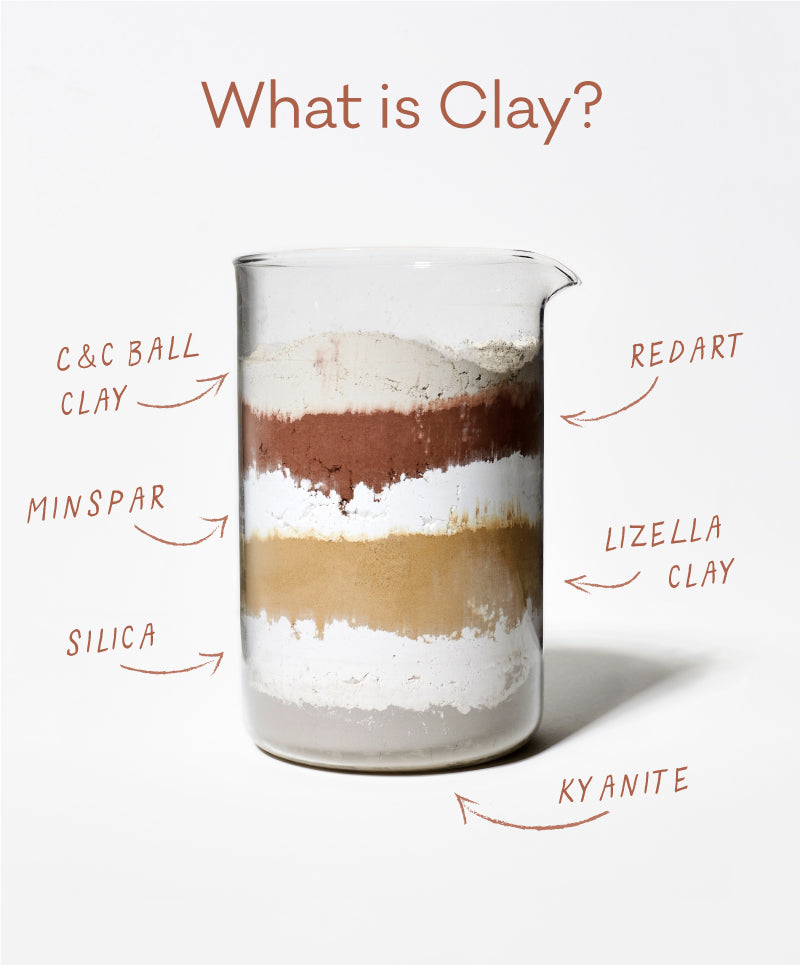
Recall the Epic of Gilgamesh, when the goddess Aruru makes Enkidu out of clay to serve Gilgamesh a slice of humble pie.In Isaiah 64:8–“Lord, thou art our father; we are the clay, and thou our potter; and we all are the work of thy hand.” And the Maori tale of Tane Mahuta, god of the forest, who creates the first human from clay. Wonder Woman and her creators at DC Comics took a page from ancient folklore, too—a warrior is crafted out of clay by her goddess mother.
What else? Clay's touted by health nuts for its ability to absorb negatively charged ions (still not sure what that means) and ward off disease-causing bacteria! It’s the main material for sewer pipes, toilets, cement, clay pigeons, wattle and daub homes, roof tiles, counter tiles, floor tiles, filtration devices, kitty litter, bricks, spark plugs, dentures! And, of course, it’s every plate, bowl, vase, and mug made at East Fork. We like to think of clay as a great unifier across time and space. Humans the world over call on clay to explain the whys and hows of life. It’s also a great differentiator. By looking at the specific materials that make up the clay used in an artifact, archaeologists and anthropologists can use pottery to determine where and when a piece was made, or if materials traveled long distances before someone formed and fired them. It's possible to determine what temperature the pottery was fired to, and from that researchers can better understand the technological capabilities of the pot's makers. Unlike rope or clothing, which deteriorate, pottery can tell a story even when it's been reduced to shards.

If researchers were to look at the fragments of an Everyday Bowl in 300 years, they'd be able to tell that East Fork uses a blend of clays from across the southeast, pictured in the map above. Clay is abundant, cheap and adaptable, and there’s no shortage of it on this planet. But, clay is such a finicky material, we can’t just use any old mud. The tiniest change in particle size in even just one raw material can set off a chain reaction with disastrous repercussions to the final product. Read on for a breakdown of the common clay bodies and their contents!
 Porcelain
Porcelain Chances are you interact with porcelain every day—by sitting on a Kohler toilet or picking up your run-of-the-mill white Target tea cup. A non-porous clay made up mostly of kaolinite, sometimes and usually with mullite, bone ash (historically literally ash made from bones, but most producers have transitioned to synthetic bone ash), steatite and alabaster mixed in. It’s fired at a super high temperature, usually glazed clear to show-off the clay’s natural white finish.
Stoneware
That’s us right here! All of our pottery is made with stoneware—a more porous family of clays with a lighter body. Stoneware clays contains small particles of mica, quartz, and kaolinite. Iron, carbon and feldspar are also usually present, but all stoneware differ in how much of each. Ours is very iron rich, which gives our work that signature freckled or speckled effect. Stoneware gets fired at the same temperature as Porcelain.
Earthenware
Terracotta garden tiles, big ol’ flower pots, and Japanese raku all are made with earthenware clay. Earthenware is highly plastic and malleable. Chemically and physically, it’s the simplest, most straight-forward blend of clay minerals. Earthenware is typically fluxed with magnesium or calcium and is very porous. It has the lowest firing temperature of these three clays, at around 1700-2000 Fahrenheit.
